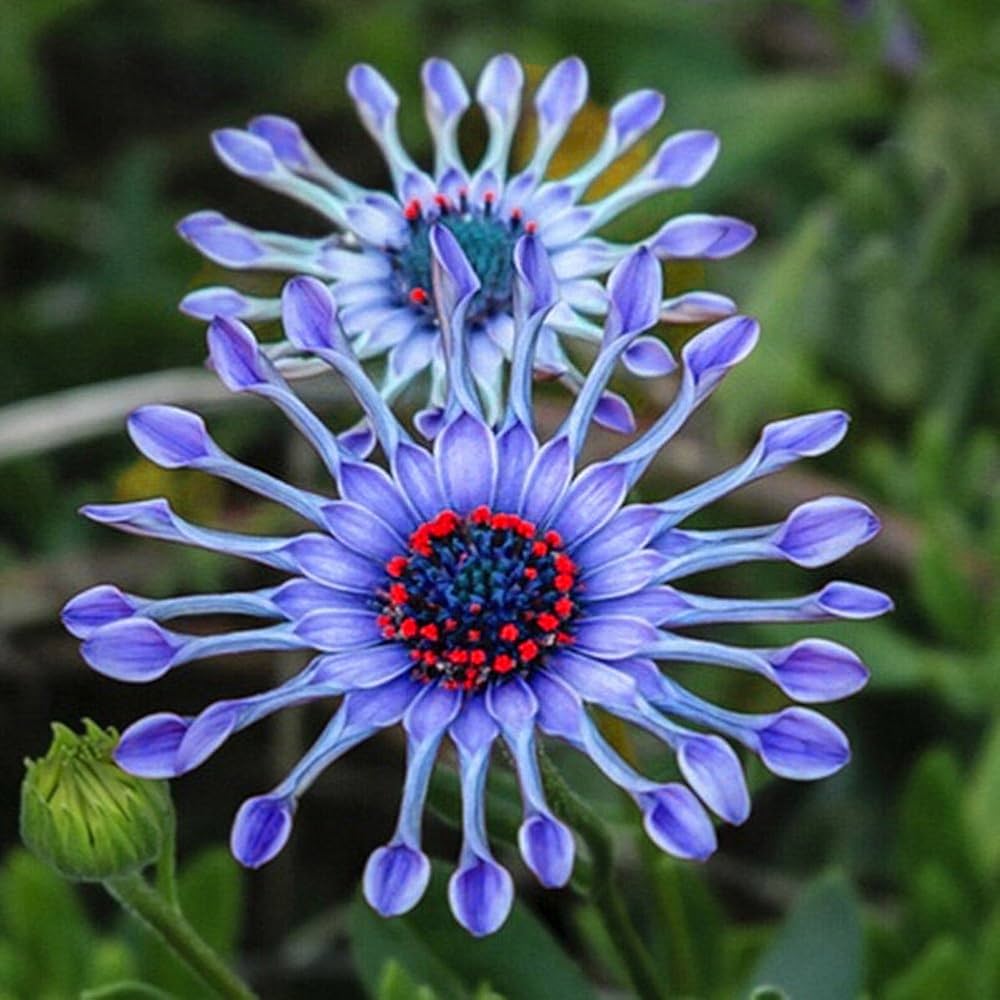Blue-Eyed Daisy Seeds
Couldn't load pickup availability
Description
Blue-Eyed Daisy (Arctotis) is a vibrant and eye-catching annual known for its striking daisy-like flowers with bold blue or purple centers surrounded by white or yellow petals. This charming plant adds a pop of color to any garden, attracting attention with its cheerful, daisy-shaped blooms that brighten up flower beds, borders, and containers. Blue-Eyed Daisies are well-suited for sunny spots and thrive in well-draining soil, making them perfect for creating colorful garden displays or as cut flowers in fresh arrangements. Their long-lasting blooms and low-maintenance nature make them an excellent choice for gardeners of all levels.
Why Choose Blue-Eyed Daisy Seeds?
- Vibrant, Striking Flowers: Blue-Eyed Daisies feature bold blue or purple centers surrounded by white or yellow petals, offering a cheerful, vibrant display.
- Attracts Pollinators: These flowers are a favorite among bees and butterflies, promoting a healthy garden ecosystem.
- Low Maintenance: Once established, Blue-Eyed Daisies are easy to grow and require minimal care, making them perfect for both novice and experienced gardeners.
- Long-Blooming Period: Enjoy a long-lasting display of flowers from late spring through summer, providing consistent color in your garden.
- Versatile for Gardens and Containers: Ideal for flower beds, borders, and containers, Blue-Eyed Daisies can brighten any space, whether in the ground or in pots.
How to Grow and Care for Blue-Eyed Daisy Seeds
-
Planting:
- Sow Blue-Eyed Daisy seeds indoors 6-8 weeks before the last frost date or directly outdoors in early spring when the soil has warmed.
- Plant the seeds on the surface of the soil and lightly press them in, as they need light to germinate.
- Use well-draining, sandy soil and maintain a temperature of 65-75°F (18-24°C) for optimal germination.
-
Transplanting:
- Once the seedlings have grown strong enough to handle, transplant them into the garden or larger pots. Ensure the plants are spaced 8-12 inches apart to allow for good airflow and growth.
- Choose a sunny location with well-draining soil for best results.
-
Watering:
- Keep the soil moist but not soggy during the germination phase. Once established, Blue-Eyed Daisies are relatively drought-tolerant and prefer dry to moderate watering.
- Water at the base of the plant to avoid wetting the foliage, which can lead to fungal issues.
-
Fertilizing:
- Feed the plants with a balanced fertilizer to encourage strong growth and abundant blooms, but avoid over-fertilizing, as it can lead to excessive foliage growth.
-
Care:
- Deadhead spent flowers regularly to encourage more blooms and maintain a tidy appearance.
- Mulch around the base of the plant to help retain moisture and keep the roots cool.
Benefits of Growing Blue-Eyed Daisy Seeds
- Bold, Colorful Blooms: The striking blue or purple center surrounded by bright white or yellow petals makes Blue-Eyed Daisies a standout flower in any garden.
- Easy to Grow: These flowers are low-maintenance, drought-tolerant, and well-suited for beginner gardeners.
- Attracts Pollinators: Bees, butterflies, and other pollinators are drawn to the vibrant blooms, enhancing the health of your garden.
- Long-Lasting Flowers: Enjoy a long season of blooms, providing continuous color and interest throughout the summer months.
- Versatile: Ideal for flower beds, garden borders, and containers, these flowers brighten any space with minimal effort.
Add the cheerful and vibrant Blue-Eyed Daisy to your garden with these easy-to-grow seeds. Their striking appearance, low-maintenance nature, and pollinator-friendly qualities make them a must-have for any garden.







